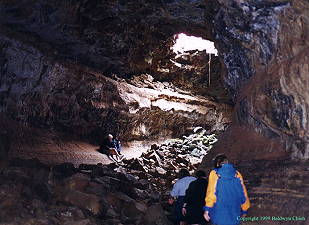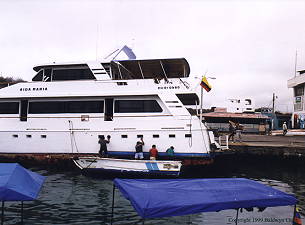

We walk back through Puerto Ayora to meet Javier, while Renato spends the afternoon with his family. We're visiting the Galápagos Islands in the low tourist season, so quite a few boats are in dry dock, while they're being worked on. The main streets in the city are lined with quaint gift shops, one of my favourites being named "Endemic Souvenirs".
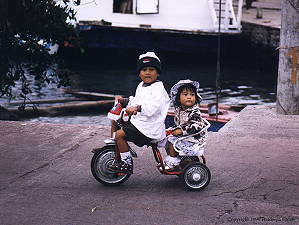
Our next activity was lunch. We took our endemic bus about two thirds of the way up the highlands to the Narwhal Restaurant. Huge hibiscus, orange trees and banana trees lined the driveway. The restaurant is a wooden shack, with a large covered dining area open to the elements. It was a tranquil setting with soft music playing, enjoyed both by us and the Darwin finches who ate our crumbs. This was our first meal on solid ground after several days, and quite a few of us actually found ourselves swaying. I guess we have to get our landlegs, after spending so long on our sealegs.
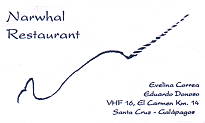
|
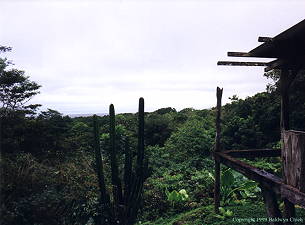 |
We continued our way up to the highlands, with the vegetation growing more lush. The highlands felt more like a park in Northern California, than it did as part of the Galápagos. The mist was heavy, and this area gets alot more water than other parts of the island because of it's altitude. Our main stop was Los Gemelos (The Twins), which is a large pair of sinkholes. The mist shrouded these giant sinkholes, adding to their beautiful lush landscape.
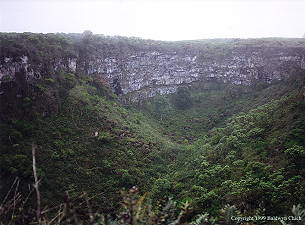 |
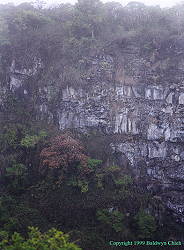 |

Because of the change in altitude and vegetation, the Highlands offers a different habitat for birds, such as warbler finches, verimillion flycatchers, short-eared owls, and the introduced smooth-billed anis.
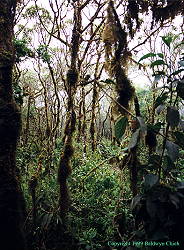 |
 Vermillion flycatcher
|
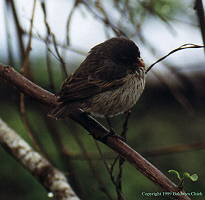 Warbler finch |
After our hike, we head down to view one of the lava tubes. Often, the outer shell of a lava flow solidifies, but the flow itself abates, not filling the cavity. The result is a lava tube (or tunnel). As I later found out, watching a video onboard the Flamingo, some of these tubes provide the best fossil digs on the Islands. Barn owls roost inside the tubes, and the bones found in their droppings give a fossil history of what they've been eating for thousands of years. By the way, this is the only time in the entire trip that I found myself without enough film. I managed to take only two shots in the lava tube, and my spare film was sitting in my backpack topside in the bus.
